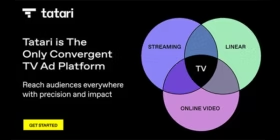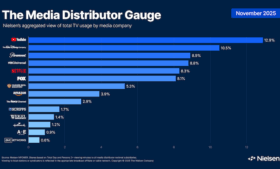
Given the challenges in the media sector, distinguishing between CTV and DOOH is key to enhancing campaign effectiveness. Angelina Marmorato, AVP of Partnerships at Lemma, offers her insights on the evolving roles of CTV and DOOH in advertising.
Why is it crucial to distinguish CTV from DOOH?
It’s critical to have clear and understandable definitions of Connected TV and Digital-out-of-Home so that media buyers and advertisers know what they’re buying. Until recently, it hasn’t been necessary to further break out Connected TV by the variable of viewer location or place. It was assumed that most Connected TV viewing was done so on a SmartTV at home in the living room.
There has been a proliferation of TV screens used at businesses and retail locations for the same reasons we love them at home – fast internet connectivity and relatively low pricing. Screen owners in the out-of-home space have connected the dots that these screens can be used effectively for advertising in venues in addition to at home.
How can advertisers use DOOH’s unique traits to maximize engagement, especially with venue-specific content?
Venue-based media offers an extremely valuable moment for advertisers to engage with their target audiences. A person’s choice to visit a venue says a lot about them. Music lovers like to frequent concert venues. Sports fans are all but guaranteed to be found at sports bars on Saturday and Sundays during football season. Venue-based TV targeting is an exciting way to reach consumers in the moment.
How can advertisers optimize media strategies using CTV and DOOH, either together or separately, and what are the key benefits of each?
When you make a DOOH buy, you know you’re buying screens that are not viewed at home. The problem is that when making a CTV buy programmatically, you may be getting what’s considered DOOH mixed in when that’s not what you’re intending to buy. Venue-based video or streaming is a highly valuable channel, but it shouldn’t be lumped in with CTV by default. Essentially, all DOOH is out of the home, but not all CTV is in the home. This is extremely confusing for buyers.
How does an omnichannel approach, with a focus on CTV, enhance media planning and buying compared to treating CTV and DOOH as separate channels?
Both targeting and measurement are different for DOOH and CTV. By creating separate campaigns or line items for DOOH, CTV (in home), and Venue-based TV – you’re able to target and measure each appropriately. If you lump them together, you’ll miss out on their unique targeting strengths as well as make measurement more difficult.
Can you share examples where separating CTV from DOOH led to better targeting and results?
A timely example is political campaigns. Location is one of the most important factors for political advertisers. IP address can be used to determine a household’s zip code to help with location targeting on CTV. But Venue-based media and traditional DOOH offer the opportunity to know exactly where the screen is located (down to latitude & longitude), making it easy to verify it’s in the voting district important to the buyer.







